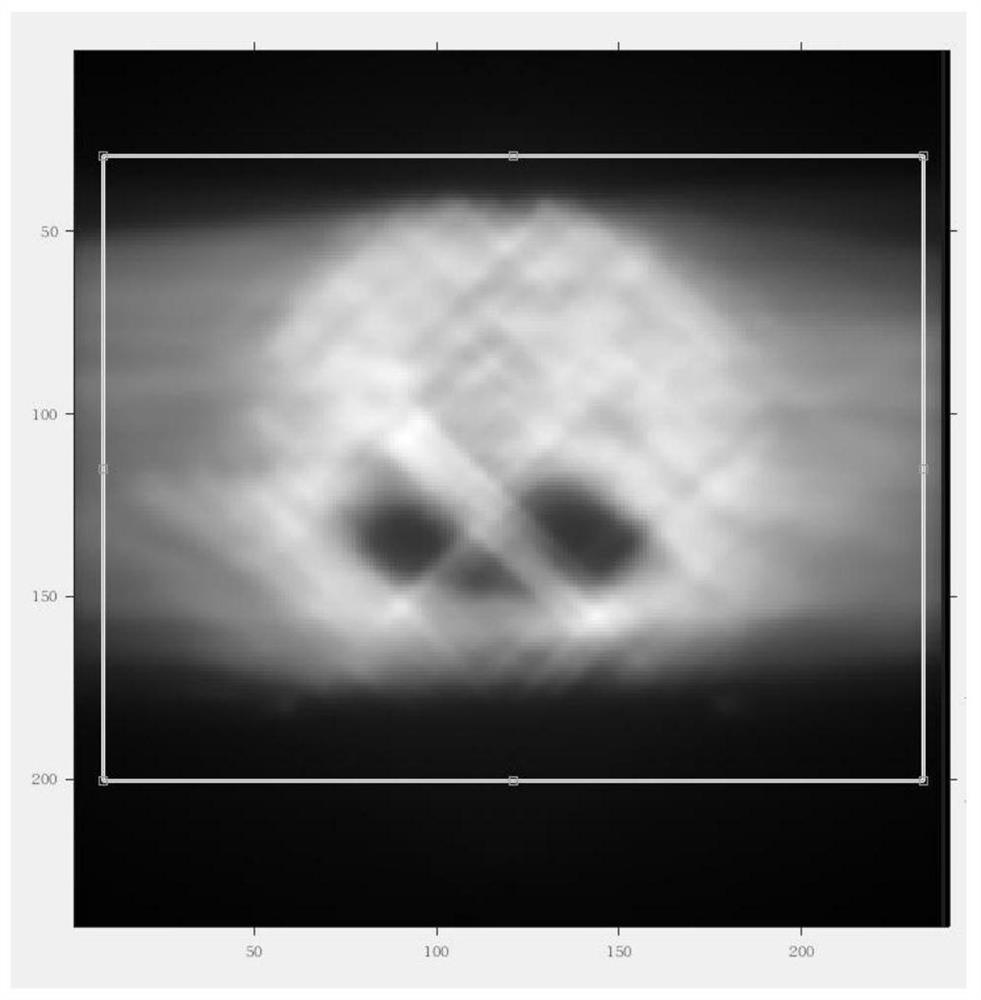Image registration method, device and storage medium
An image registration and image technology, applied in image analysis, image enhancement, image data processing and other directions, can solve the problems of low efficiency, slow random algorithm, easy to fall into local optimal solution, etc., and achieve good global searchability. , the effect of high position accuracy
- Summary
- Abstract
- Description
- Claims
- Application Information
AI Technical Summary
Problems solved by technology
Method used
Image
Examples
Embodiment 1
[0056] A method for image registration, suitable for execution in a computing device, comprising the following steps (such as figure 1 shown):
[0057] (1) Mark the region of interest 101 on the image to be registered; preferably in this embodiment, the region of interest is selected manually or automatically selected by algorithm definition, such as defining an area above a certain contour line of the image, etc.;
[0058] figure 2 It is a schematic diagram of manually selecting a region of interest in an exemplary embodiment of the present invention, and the region inside the rectangular frame in the figure is the manually selected region of interest. Those skilled in the art should understand that the shape of the manually selected region of interest is not necessarily a rectangle, and other arbitrary shapes can also be selected.
[0059] In this embodiment, preferably, the region of interest may also be automatically selected through an algorithm definition. The automa...
Embodiment approach 1
[0070] Embodiment 1: The registration rotation angle step size and the registration translation step size are respectively set to the minimum rotation angle step size and the minimum translation step size multiplied by a coefficient not less than 1.
[0071] The minimum rotation angle is θ min , the minimum translation step is {Lx,Ly} (if the length and width of the picture pixels are the same, that is, Lx=Ly), the registration rotation angle step can be set to k=k1*θ min (k1>=1), the registration translation step is set to {k2*Lx, k3*Ly} (k2, k3>=1)
Embodiment approach 2
[0072] Embodiment 2: The registration rotation angle step size and the registration translation step size are set to a fixed step size plus a random step size.
[0073] The minimum rotation angle is θ min , the minimum translation step size is {Lx,Ly}, and the registration rotation transformation step size can be set to k1*θ min +δ (k1>=1, δ>=0 random), the registration translation step is set to {k2*Lx+ε, k3*Ly+τ} (k2, k3>=1, ε,τ>=0 random )
PUM
 Login to View More
Login to View More Abstract
Description
Claims
Application Information
 Login to View More
Login to View More - R&D
- Intellectual Property
- Life Sciences
- Materials
- Tech Scout
- Unparalleled Data Quality
- Higher Quality Content
- 60% Fewer Hallucinations
Browse by: Latest US Patents, China's latest patents, Technical Efficacy Thesaurus, Application Domain, Technology Topic, Popular Technical Reports.
© 2025 PatSnap. All rights reserved.Legal|Privacy policy|Modern Slavery Act Transparency Statement|Sitemap|About US| Contact US: help@patsnap.com



